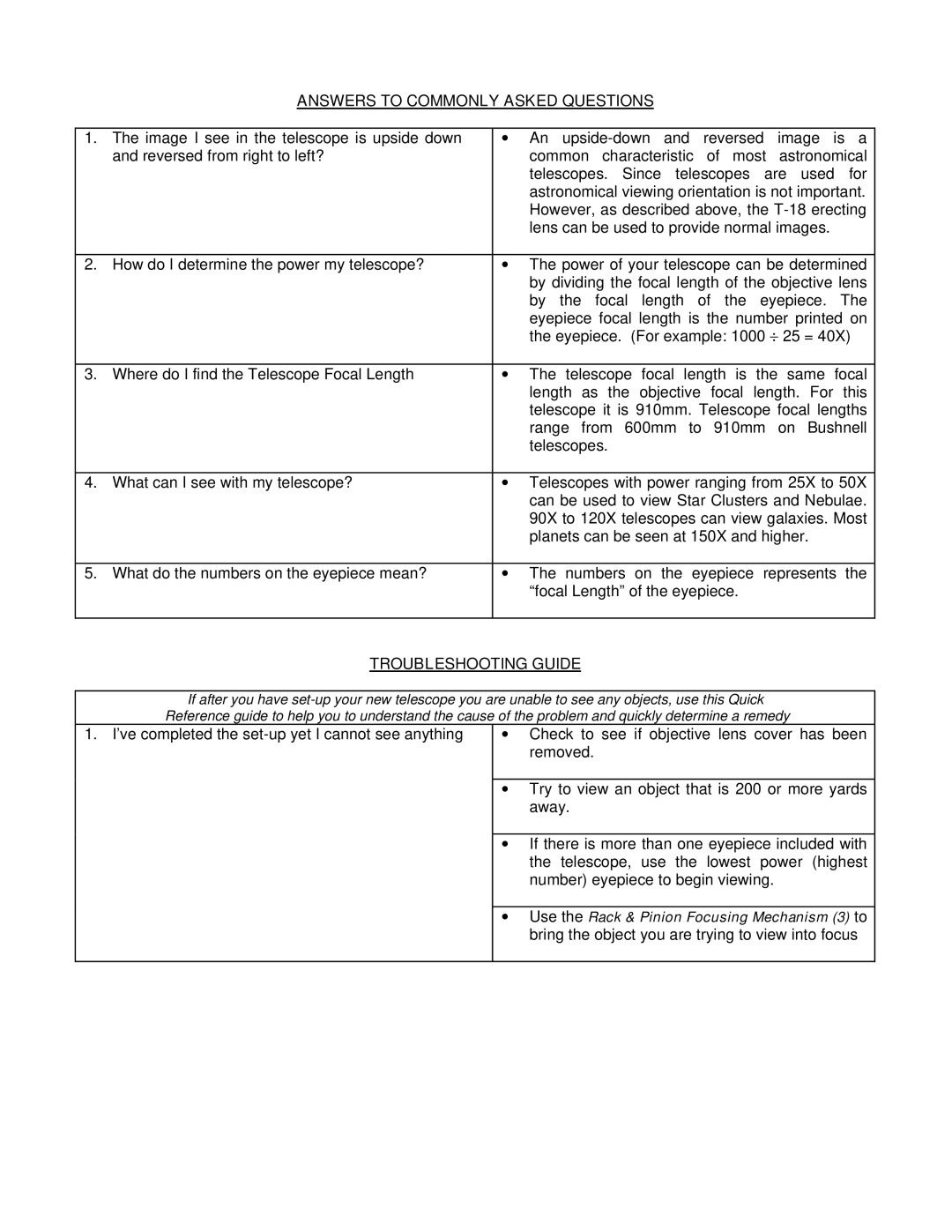
| ANSWERS TO COMMONLY ASKED QUESTIONS | |
|
|
|
1. | The image I see in the telescope is upside down | ∙ An |
| and reversed from right to left? | common characteristic of most astronomical |
|
| telescopes. Since telescopes are used for |
|
| astronomical viewing orientation is not important. |
|
| However, as described above, the |
|
| lens can be used to provide normal images. |
|
|
|
2. | How do I determine the power my telescope? | ∙ The power of your telescope can be determined |
|
| by dividing the focal length of the objective lens |
|
| by the focal length of the eyepiece. The |
|
| eyepiece focal length is the number printed on |
|
| the eyepiece. (For example: 1000 ÷ 25 = 40X) |
|
|
|
3. | Where do I find the Telescope Focal Length | ∙ The telescope focal length is the same focal |
|
| length as the objective focal length. For this |
|
| telescope it is 910mm. Telescope focal lengths |
|
| range from 600mm to 910mm on Bushnell |
|
| telescopes. |
|
|
|
4. | What can I see with my telescope? | ∙ Telescopes with power ranging from 25X to 50X |
|
| can be used to view Star Clusters and Nebulae. |
|
| 90X to 120X telescopes can view galaxies. Most |
|
| planets can be seen at 150X and higher. |
|
|
|
5. | What do the numbers on the eyepiece mean? | ∙ The numbers on the eyepiece represents the |
|
| “focal Length” of the eyepiece. |
|
|
|
TROUBLESHOOTING GUIDE
If after you have
1. I’ve completed the
∙Check to see if objective lens cover has been removed.
∙Try to view an object that is 200 or more yards away.
∙If there is more than one eyepiece included with the telescope, use the lowest power (highest number) eyepiece to begin viewing.
∙Use the Rack & Pinion Focusing Mechanism (3) to bring the object you are trying to view into focus
